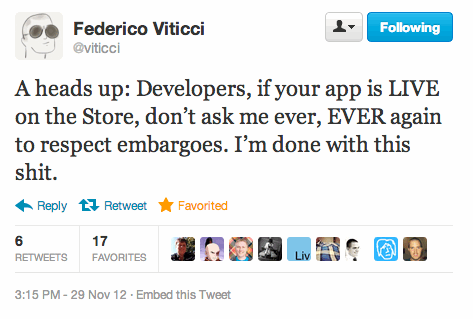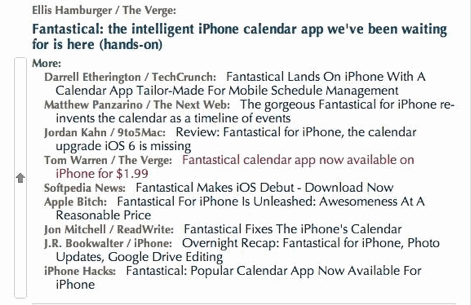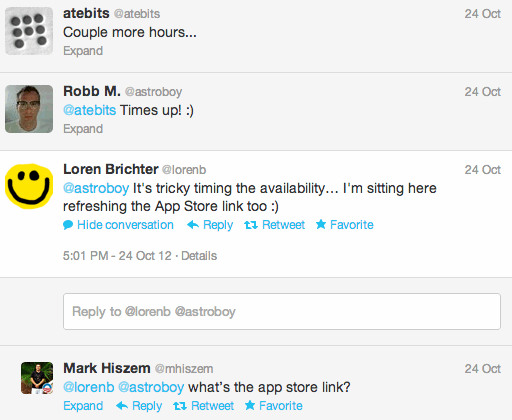There is a tradition in the web world to manage your PR with a time bomb effect called embargo: you reached out early - prior to your launch - to some publication and ask not to publish before a certain time. Many bloggers and journalists hate them
App Discovery is driven a lot by PR. Developers know it.
In the App Store world, more than in the web world, PR embargos is something a developer logically want because it will supposedly create a momentum effect and a spike of downloads in a very short period of time is what makes an app pop up in the top ranks - and many believe - still - that this is what matters.
The problem? it hardly works because nearly no developer knows well enough the inner mechanics of the App store and App ecosystem to make sure the embargo time matches exactly and the accurate release time
Why?
1. There are two ways to release a mobile app in the App Store: a - immediate release as soon as the app is Approved by Apple or b- release pending Developer activation. The developers decide which one is good for them (many developers do not know those options by the way)
2. in Both cases the accurate availability is not controlled by the Developer. The first case is obvious (no one knows when Apple will approve exactly an app). The second case is less obvious: indeed if one decides when an app goes live, after being approved by Apple, how can’t i know exactly when it will be available?
3. Because the App Store has latency while propagating your app into the 140+ App Stores. Between the moment you press the button and the moment your app is available to all a couple of hours can pass, maybe more.
What does that mean? Well that even if you know those rules, you will never know EXACTLY when your app is available to all. Meaning your Embargo time is not solid.
But wait? Why can’t you just add an extra margin of time to make sure your embargo time matches exactly your availability? Say you want bloggers to cover at 5pm EST time, all you would have to do is press the “release” button in iTunes connect at say 10am EST. Normally that would be more than enough for the app to be available everywhere.
Well. Yes except that there is a little important detail: it is more than likely that many users will see this app before your embargo time as the app propagate through the App Store
This user can be anyone. A simple user or a very influential users with lots of Twitter followers. Or an obsessed blogger with a specific app/developer who will check often to break a news.
Boom. Your embargo is gone with only one tweet.
There is more. App recommendation engines - the good one of course, like Appsfire  - will be very fast at spotting great new apps, before they even get to the rankings or visible to most users. And once they do, their users will know too.
- will be very fast at spotting great new apps, before they even get to the rankings or visible to most users. And once they do, their users will know too.
Boom. Your embargo is gone here again.
We know that recently for example a few bloggers, were rightly pissed off by the embargo related to Fantastical. We broke the news very early on when this app was available as we spotted it nearly immediately - without even knowing there was an embargo (how could we know!). The news was live and a few bloggers published earlier (The Verge,..)


A few weeks back, a different episode happened to the now popular LetterPress by Loren Brichter (the guy who created Tweetie and knows a couple of things about PR and apps): There was an embargo on his launch and a bunch of major blogs respected it. But he did not take into account the App store latency and many users could not download LetterPress as it was announced live…

Can that be fixed? Yep.
Just don’t use embargoes . If your app is good, it will be covered. Just precise to whoever you are contacting that there is no embargo and give a preferred time frame allowing enough time for the app to be live to all. This assume you have chosen to control the date of the release in the App Store.
Embargoes will transform your breaking news in a broken news. Just don’t use it.
Bottom line: if you are an app developer forget about embargos, if you are a blogger simply ignore them.
Note: The Play Store behaves slightly differently but there is also latency and propagation times.






